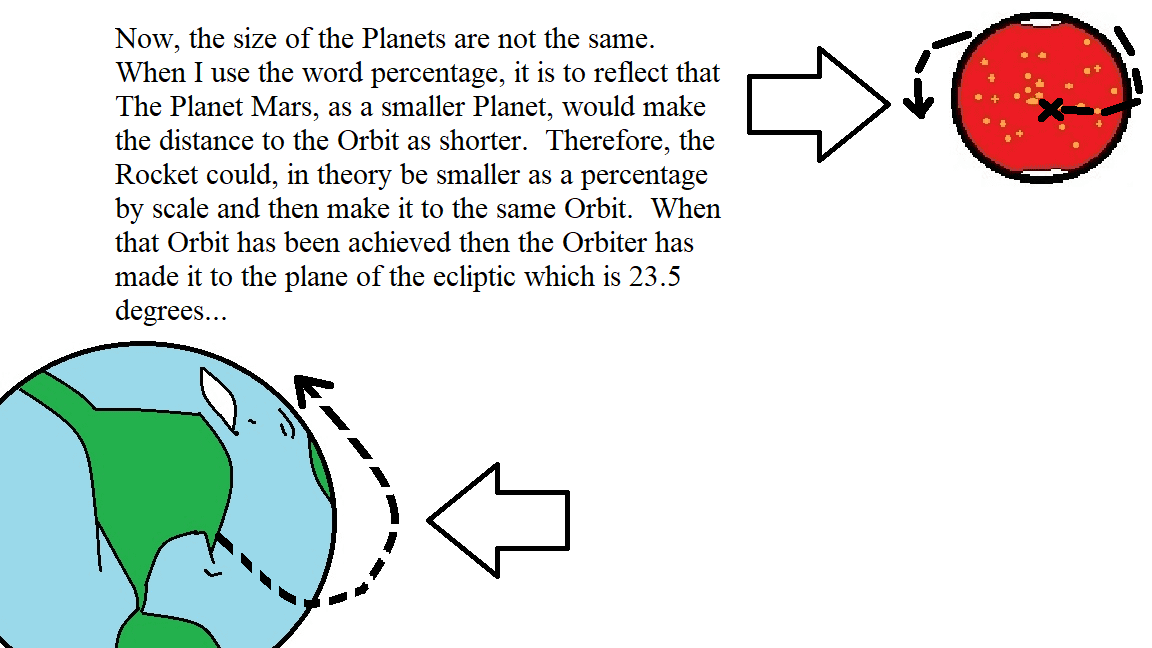
Thrust must be great enough to achieve Orbit
…it was that when estimating the amount of lift for a Rocket from the Surface of The Planet Mars, to calculate it as a percentage is a fair number.
What this means is that when I repeat that the pull of Gravity, as on the same plane as The Planet Earth, the number is 23.5. It is the number that is used for both Planets.
Now, the size of the Planets are not the same. When I use the word percentage, it is to reflect that The Planet Mars, as a smaller Planet, would make the distance to Orbit as shorter. Therefore, the Rocket could, in theory be smaller as a percentage by scale and then make it to the same Orbit. When that Orbit has been achieved then the Orbiter has made it to the plane of the elliptic which is 23.5 degrees…
….The orbit of departure lay in the plane of the ecliptic, namely at an angle of 23.5 degrees to the plane of the Equator; it is in the plane of the ecliptic that both Earth and Mars circle around the Sun… Page 120 of Mars: a Technical Tale 1st Edition.
This information is important for Rockets that would depart the surface of The Planet Mars and the surface of The Planet Earth. To repeat, Rockets, leave and enter Orbit for both Planets the same way. The hard work for this process is done. If both really do it the same way, the calculations are complete.
The Goal of the Mars Program will be to Launch a Rocket and like the Moon Program and two parts of the Spacecraft. This will be for the journey through Space between the Planets.
It is that when the body and the part of the Spacecraft that will be connected will then place it in a useful position for “Astrological Orbit of the Star”. Now they can proceed.
The original program calls for three orbiters to travel together.
This will be using the Law of the Falling Bodies that was first written by Galileo the Italian Astronomer.
Look us up @ TheCanadianSpace on X
